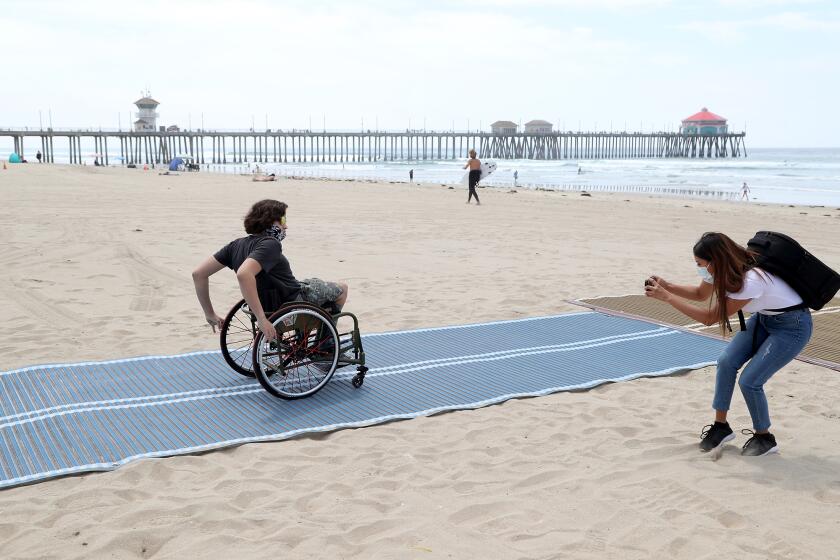Life aboard the Alaska Eagle: howling winds, a shaking mast
- Share via
ABOARD THE ALASKA EAGLE, off Cape Horn — We are anchored in Martial Cove on Herschel Island, just eight miles north of Cape Horn.
The wind is howling through the rigging at a steady 40 knots, with gusts up to 50 knots.
The Alaska Eagle is sailing back and forth on her tandem anchors and heeling over in the gusts. Sometimes a blast shakes the mast and the whole boat vibrates. Even in this well-protected cove, 2-foot foot waves are rolling past us, and the lead-gray sea is covered with streaks of white.
We departed Puerto Williams, Chile, on Sunday morning and began a fast sail down the Beagle Channel with a double-reefed mainsail and small jib top.
An hour later, the Argentinian navy closed the port at Ushuaia because of high winds. Puerto Williams closed soon afterward, as a new low-pressure system rolled eastward down the channel.
We wanted to get out and down to the Wollaston Islands before the ports closed. This would allow us to be at the Horn quickly and on our way when the weather moderated.
The cold, 60-mile sail to Martial Cove turned rugged in Bahia Nassau, a 20-mile open bay between Isla Navarino and the Wollastons.
The gale filled in soon after we entered the big bay. With a 30-mile fetch, good-sized waves built quickly and our starboard tack reach turned wet and wild.
Halfway across, the wind began to sit on 40 knots. Now the crew had its first big-time sail change, taking down the small jib top and hoisting the storm staysail.
The guys, all suited up and wearing gloves, went forward in their safety harnesses and did a great job. They clawed the jib down, secured it and then set the staysail; all of this was happening on a pitching deck with sheets of frigid water coming across.
Everything was done with hand signals; it was impossible to hear over the din of rushing air and water. We considered putting a third reef in the mainsail, but the shelter of the Wollastons was just 15 miles ahead, and we decided not to risk damaging the sail.
The Alaska Eagle’s crew is really coming together, and their abilities are more impressive than the voyage applications they submitted.
Capt. Richard Crowe clearly explains each maneuver prior to its execution. After that, no one needs further help.
Steering and sail trim are easily done by these guys, all of them having sailed for many years.
So we focus on teaching safety, big-boat rules and handling, and heavy-weather techniques.
Bruce Griffen is churning out lots of hot stews — even French toast for breakfast this morning.
For now, we are demonstrating another heavy-weather technique: waiting for better conditions before we really go out to sea. Our weather routers in New York tell us we will have a window late Tuesday, followed by a few days of good weather and winds in the 20- to 30-knot range.
Meanwhile, as the gusts shake the boat, some of us are on laptops, others sleeping or reading, and a serious cribbage game is happening in the main salon.
BRAD AVERY is director of OCC’s School of Sailing & Seamanship, located on Pacific Coast Highway in Newport Beach. The school is one of the nation’s largest public sailing programs, offering courses from beginning sailing to advanced level offshore voyages. The school is supported through course fees and private donations. During this voyage to South Georgia Island, Avery will be submitting weekly reports to the Daily Pilot. The voyage can also be followed on Alaska Eagle’s Facebook page and on the school’s website: occsailing.com



